new posts in all blogs
Viewing: Blog Posts Tagged with: Vision, Most Recent at Top [Help]
Results 1 - 17 of 17
How to use this Page
You are viewing the most recent posts tagged with the words: Vision in the JacketFlap blog reader. What is a tag? Think of a tag as a keyword or category label. Tags can both help you find posts on JacketFlap.com as well as provide an easy way for you to "remember" and classify posts for later recall. Try adding a tag yourself by clicking "Add a tag" below a post's header. Scroll down through the list of Recent Posts in the left column and click on a post title that sounds interesting. You can view all posts from a specific blog by clicking the Blog name in the right column, or you can click a 'More Posts from this Blog' link in any individual post.

By:
Heidi MacDonald,
on 2/3/2015
Blog:
PW -The Beat
(
Login to Add to MyJacketFlap)
JacketFlap tags:
Movies,
Marvel,
Breaking News,
Joss Whedon,
Showbiz,
Top News,
Paul Bettany,
marvel movies,
Marvel Cinematic Universe,
avengers age of ultron,
Vision,
Add a tag
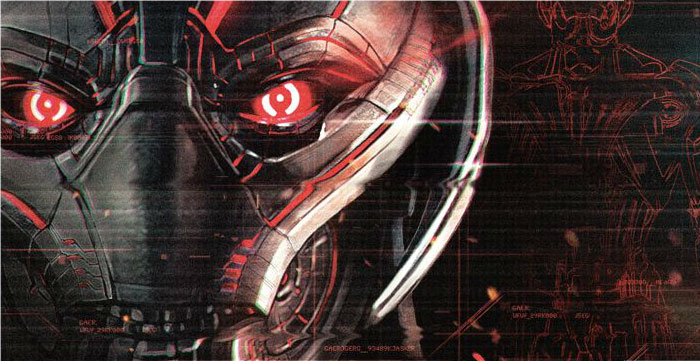
While we’ve seen a few smaller glimpses of Paul Bettany‘s Vision in Avengers: Age of Ultron concept art, we haven’t seen the actual man in costume.
This still isn’t that, but thanks to the folks at Fathead Wall Decals (via ComicBookMovie), we now have our best look yet at Vision’s color scheme and how he’ll appear in the upcoming Joss Whedon-helmed sequel.
Looks good! Not much else to add here, except that Vision was always my favorite Avenger as a kid, so my own excitement is pretty palpable.
If you’re so inclined, you can purchase these decals, which include a limited selection of the rest of the cast, over at Fathead’s site.
Avengers: Age of Ultron releases on May 1st.
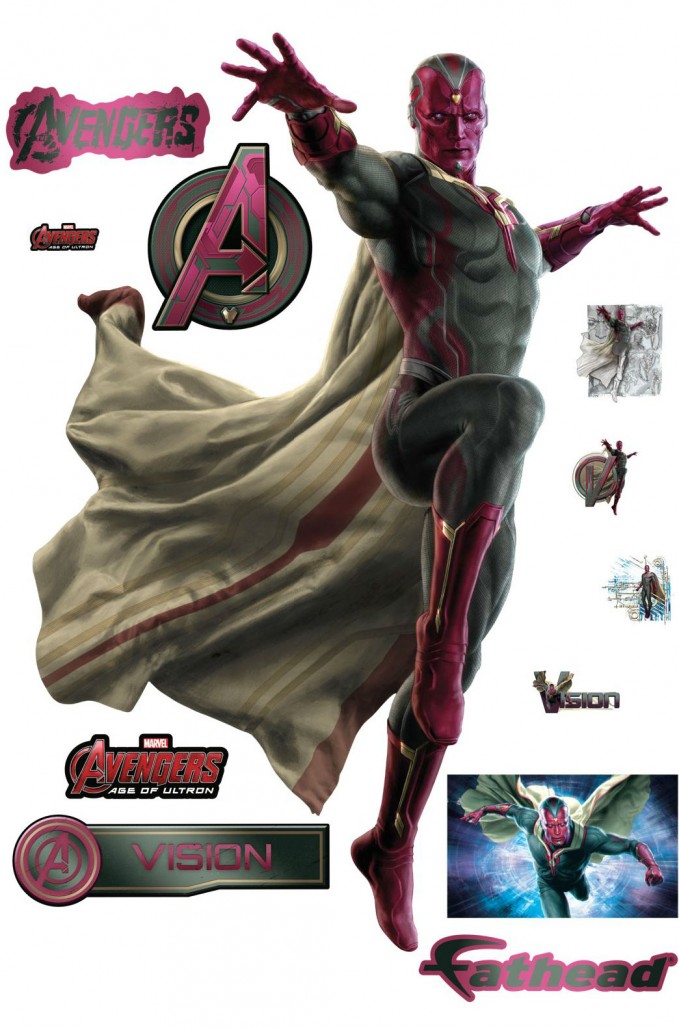

By: Meredith Sneddon,
on 8/21/2014
Blog:
OUPblog
(
Login to Add to MyJacketFlap)
JacketFlap tags:
computing,
cognitive psychology,
*Featured,
Science & Medicine,
Psychology & Neuroscience,
visual processing,
Experimental vision,
Li Zhaoping,
Understanding vision,
Books,
Data,
vision,
Theory,
models,
Add a tag
About half a century ago, an MIT professor set up a summer project for students to write a computer programme that can “see” or interpret objects in photographs. Why not! After all, seeing must be some smart manipulation of image data that can be implemented in an algorithm, and so should be a good practice for smart students. Decades passed, we still have not fully reached the aim of that summer student project, and a worldwide computer vision community has been born.
We think of being “smart” as including the intellectual ability to do advanced mathematics, complex computer programming, and similar feats. It was shocking to realise that this is often insufficient for recognising objects such as those in the following image.

Image credit: Fig 5.51 from Li Zhaoping,
Understanding Vision: Theory Models, and Data
Can you devise a computer code to “see” the apple from the black-and-white pixel values? A pre-school child could of course see the apple easily with her brain (using her eyes as cameras), despite lacking advanced maths or programming skills. It turns out that one of the most difficult issues is a chicken-and-egg problem: to see the apple it helps to first pick out the image pixels for this apple, and to pick out these pixels it helps to see the apple first.
A more recent shocking discovery about vision in our brain is that we are blind to almost everything in front of us. “What? I see things crystal-clearly in front of my eyes!” you may protest. However, can you quickly tell the difference between the following two images?
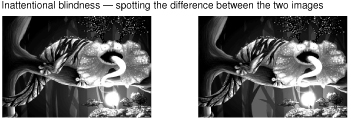
Image credit: Alyssa Dayan, 2013 Fig. 1.6 from Li Zhaoping
Understanding Vision: Theory Models, and Data. Used with permission
It takes most people more than several seconds to see the (big) difference – but why so long? Our brain gives us the impression that we “have seen everything clearly”, and this impression is consistent with our ignorance of what we do not see. This makes us blind to our own blindness! How we survive in our world given our near-blindness is a long, and as yet incomplete, story, with a cast including powerful mechanisms of attention.
Being “smart” also includes the ability to use our conscious brain to reason and make logical deductions, using familiar rules and past experience. But what if most brain mechanisms for vision are subconscious and do not follow the rules or conform to the experience known to our conscious parts of the brain? Indeed, in humans, most of the brain areas responsible for visual processing are among the furthest from the frontal brain areas most responsible for our conscious thoughts and reasoning. No wonder the two examples above are so counter-intuitive! This explains why the most obvious near-blindness was discovered only a decade ago despite centuries of scientific investigation of vision.
Another counter-intuitive finding, discovered only six years ago, is that our attention or gaze can be attracted by something we are blind to. In our experience, only objects that appear highly distinctive from their surroundings attract our gaze automatically. For example, a lone-red flower in a field of green leaves does so, except if we are colour-blind. Our impression that gaze capture occurs only to highly distinctive features turns out to be wrong. In the following figure, a viewer perceives an image which is a superposition of two images, one shown to each of the two eyes using the equivalent of spectacles for watching 3D movies.
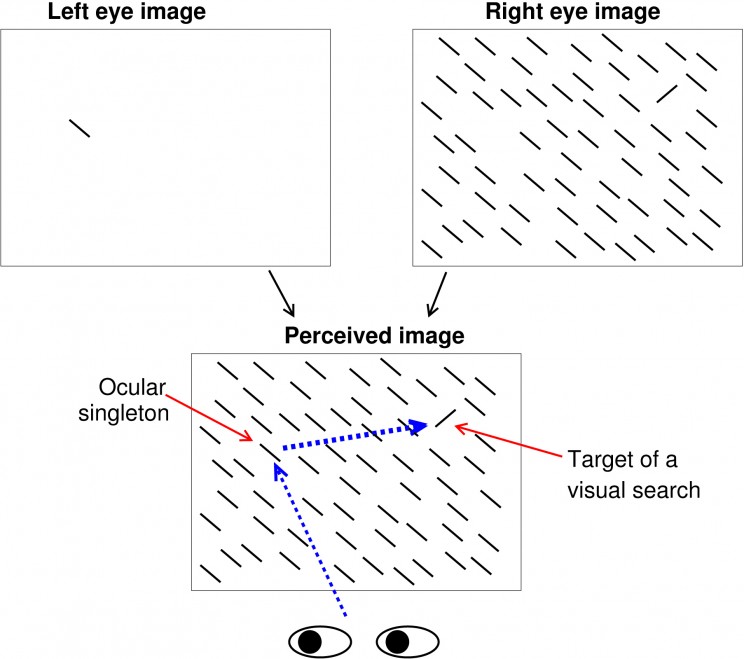
Image credit: Fig 5.9 from Li Zhaoping,
Understanding Vision: Theory Models, and Data
To the viewer, it is as if the perceived image (containing only the bars but not the arrows) is shown simultaneously to both eyes. The uniquely tilted bar appears most distinctive from the background. In contrast, the ocular singleton appears identical to all the other background bars, i.e. we are blind to its distinctiveness. Nevertheless, the ocular singleton often attracts attention more strongly than the orientation singleton (so that the first gaze shift is more frequently directed to the ocular rather than the orientation singleton) even when the viewer is told to find the latter as soon as possible and ignore all distractions. This is as if this ocular singleton is uniquely coloured and distracting like the lone-red flower in a green field, except that we are “colour-blind” to it. Many vision scientists find this hard to believe without experiencing it themselves.
Are these counter-intuitive visual phenomena too alien to our “smart”, intuitive, and conscious brain to comprehend? In studying vision, are we like Earthlings trying to comprehend Martians? Landing on Mars rather than glimpsing it from afar can help the Earthlings. However, are the conscious parts of our brain too “smart” and too partial to “dumb” down suitably to the less conscious parts of our brain? Are we ill-equipped to understand vision because we are such “smart” visual animals possessing too many conscious pre-conceptions about vision? (At least we will be impartial in studying, say, electric sensing in electric fish.) Being aware of our difficulties is the first step to overcoming them – then we can truly be smart rather than smarting at our incompetence.
Headline image credit: Beautiful woman eye with long eyelashes. © RyanKing999 via iStockphoto.
The post Are we too “smart” to understand how we see? appeared first on OUPblog.

By: frankramer,
on 7/16/2014
Blog:
(
Login to Add to MyJacketFlap)
JacketFlap tags:
vision,
Energy,
Healing,
Mary,
Luke,
intuitive,
Religion and Spirituality,
characteristics of intuition,
Intuition in the Book of Luke,
role of vision in transformation,
On Intuition,
intuitive healing,
Uncategorized,
Add a tag

Mary’s Vision: The Archangel Gabriel
During times of crisis, especially when serious health related issues are at stake, the occurrence of visions or other paranormal phenomenon is not as unusual as one might expect. Many people have been led to believe that seeing a vision either indicates saintliness or insanity—not a comfortable point of view to hold when an angel drops by! As a result, people tend to be very cautious about sharing their experience of visions. However, I found that quite a number of average people have visions. In my classes, many students recounted seeing visits by supernatural beings like Jesus or angels or the presence of a comforting divine light. For the most part, these experiences come at traumatic or life changing times in someone’s life.
These phenomena can be thought of as expressions of pure intuition, healing energy that breaks through when the veil between this world and other realities is made thin by the magnitude of a mind-bending reality a person is facing. The reality to be encountered can be traumatic such as life threatening surgery, a sexual assault, or death of a loved one. However, it may not necessarily be negative. It could be something profoundly wonderful such as the gifting of a special and life changing calling as Mary experienced with the visit of the Archangel Gabriel who heralded her role to be the mother of Jesus.
At these times, visions come to tell the distraught person that the overwhelming reality encountered is not all there is and will not have to be born alone—that something more abides giving comfort, love and insight. In Mary’s case, she was told she had found favor with God and that the power of the Most High would overshadow her.
Visions vs. Hallucinations
Some people may be confused by the difference between visions and hallucinations. According to Morton Kelsey, in Dreams: A Way to Listen to God, Paulist Press, 1978, visions and hallucinations are very different and easy to distinguish. He says the vision is “attributed to the inner world” by the beholder while a hallucination is “attributed to the physical world.” Visions can be very practical and helpful, tending to bring gifts like guidance and comfort. Hallucinations, on the other hand, are taken to be actually there in the physical world when they aren’t perceived by others, and tend to instill fear and other negative feelings into the beholder. Hallucinations can come as a side effect of certain drugs or medications.


Howdy, folks, Happy news, the ebook version of PLUMB CRAZY from Swoon Romance has found its way onto the virtual shelves of booksellers worldwide. Try here for a copy from Amazon US. Here is Amazon UK. Here is Amazon Australia. Here is Amazon Canada. Try here for a copy for your B&N Nook . It will be available in paper in a few weeks. I hope you consider giving it a look.
Publishing a book is a little like sending your pea green boat out to sea, and you have no idea where it will go. It sails off into the sun and then into the moon. You've hidden pieces of yourself inside that boat, and it's heading to the ends of the Earth. Publishing is like that.
It's also like this. I had a telling dream about publishing once that I have never forgotten.. I dreamed I was a woman who lived in a fishing village. Everyone was heading to edge of sea with their nets to fish, but I remained behind.I was painstakingly tying my own net.
Neighbors would drop by and laugh at me. "You're never going to catch any fish sitting in that house tying a net."
I didn't stop working, but I could hear folks snickering. I felt like the worst kind of fool but kept working.
Years pass. I grow very old. I hobble out of my house with the net I've been working on my whole life. The people of the village come out of their neat little homes, laughing and pointing fingers. I am finally going to toss my net.
I walk to the edge of sea with this fine net balled in my arms. I toss it into the air. It furls out and furls. It billows into the sky. It's so large it captures the whole world.
This is my dream. This is my hope for my work.
Follow your creative muse and do something amazing. I will be back next week with more of my Book Birthday month.
Here is the doodle. I handed out some out at BEA. Here is one. "Blue Eyes."
That spot that yer standing,that space that you're sittingThat the world ain't got you beat
That it ain't got you licked
It can't get you crazy no matter how many
Times you might get kicked
Bob Dylan
By: frankramer,
on 5/9/2014
Blog:
(
Login to Add to MyJacketFlap)
JacketFlap tags:
Meditation Methods,
Intutive Methods,
intuitive healing,
Uncategorized,
imagination,
vision,
healing,
intuition,
insight,
energy healing,
Intuitive insights,
On Intuition,
intuitive methods,
Add a tag

St. Michael, a Healing Angel in the Christian Tradition (13th Century Icon in St. Catherine’s Monastery)
Whether one chooses to use prayers, dreams or intuitive methods as a practice to invoke the power of intuitive healing, there are eight steps the person seeking healing may do to shape his or her attitude and ability in a way that encourages receptivity to healing. The first five steps prepare and bring the practitioner to the necessary trusting, child-like intuitive heart space which is the healing center, no matter if the healing is done for oneself or for another person. The last three steps help accomplish and follow through with the mission. This means relaxing, getting out of the head and seeing with the “eyes” of the heart. Only then is one open to receive the intuitive healing information that may come in many forms such images, sounds, voices, sensations, smells, or memories.
- Acknowledging the need for healing. Before all else, this awareness is pre-requisite. It often implies a humble acceptance that one cannot alter the condition without help, usually after many attempts have been made to heal on one’s own or through commonly accepted medical practices. This is a challenge for those of us who are used to being “in control,” and may require a relinquishing or putting aside that mindset.
- Believing I can be healed. This step is perhaps the most difficult for those of us who haven’t developed a strong faith in things that cannot be measured or predicted. It is, however, the most important step. If I cannot believe in my healing, then I should pray or intend that I may grow in my capacity to believe it.
- Tuning into my Ideal. This step may be done in a variety of ways. After quieting the mind and relaxing, I can imagine or “summon’ my ideal to make its presence fully felt in my mind and heart. I may see the face of a divine healer or imagine the power of healing energy. I can take this imagery work further by imagining this divine being holding me in a comforting or healing embrace or see a warm wave of energy enveloping me. The quality of my ideal will play a big part in determining the type of healing I draw to myself.
- Initiating and intending a healing. This may be a prayer or simple intention, imagining the results as already happened. Be as specific as possible in the prayer or intention.
- Confidently expecting a response. Know that healing in some way, shape or form, has already begun.
- Tuning myself into the communication coming to me. Healing may take many forms, along with a message to you what is happening. I can expect anything like imagery, sounds, sensations, thoughts, smells or a memory to convey something. The trick is to be very “tuned in” as these immediate responses which are often very illusory. Sometimes it might be just a subtle feeling of peace.
- Reflecting on and learning from the communication. I may need to ask myself what is the meaning of the information I have received. For example, if the image of an Oriental doctor doing acupuncture came, I might ask myself if I need to try acupuncture. Usually, the first association holds the clue. You can then amplify on this by asking more questions to clarify and get more information.
- Acting on it. If you get a specific insight to take action, such as cutting down on your salt, do so.


By: frankramer,
on 2/15/2014
Blog:
(
Login to Add to MyJacketFlap)
JacketFlap tags:
Jesus,
faith,
vision,
Peter,
Luke,
intuition,
insight,
Religion and Spirituality,
Intuition in the Book of Luke,
role of vision in transformation,
Intuitive insights,
intuitive perspective,
Transfiguration,
Add a tag
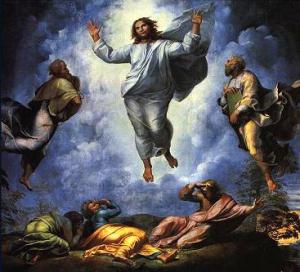
The Transfiguration by Raphael
Luke 9 is about bringing the disciples to the mountain top, literally and figuratively, and then sending them into the world while letting them know what the cost of discipleship is all about. In the process, a growth of intuitive insight occurs among the disciples to the point where they can see the full revealing of Jesus as He is, beyond the carpenter from Nazareth. They can see his essential energy field in all its glory and wonder, as well as those of Moses and Elijah who set in motion the forces of spiritual tradition that led to Jesus.
A Call to Let Go
After having chosen his disciples, Jesus sends them out with little in the way of backup support to proclaim the Good News and to heal. In a sense, it is the pulling away of the usual supports we are accustomed to for a greater good. The call to grow one’s intuition often involves a call to let go of the things we previously relied on for support.
A Discovery of Miraculous Abundance
Early on in the call to open the third eye of understanding, the seeker becomes aware that highly developed spiritual persons can summon and bring abundance of resources and good health, defying our common perspective that the pie is only so large. The disciples witness this so many times they begin to believe it themselves. They begin to see that life can be lived on different terms. There will always be enough with the grace of God.
The Recognition of God’s Presence among Us
Jesus constantly asks His disciples who they think He is, testing their depth of spiritual awareness. When Peter answers that Jesus is the Messiah, Jesus knows Peter’s eyes have been opened. In a sense, all of us are constantly being asked the same thing. Can we see the presence of God in our lives? If Jesus is the God for us, can we recognize Him here among us now? As with Peter, when we can see God even in the lowliest person, we have reached a significant point of spiritual development.
Before the disciples recognized Jesus’ true nature, the demons inside possessed people were the only ones who recognized Him. It is much the same within ourselves, our demons torment us, and make us aware until we can recognize the divine and be healed. Their coming to the fore is almost necessary to precede the healing call of the divine.
The Mountain Top Experience
Like Peter and the apostles, we are usually relaxed, half asleep or in a state of meditation when suddenly there is a shift of consciousness and we can see auras and energy fields. In this state the disciples witness Jesus in splendor, along with the great spiritual leaders who preceded him. Like us, the disciples want to capture this precious moment and make order out of it by constructing something to make it permanent. They want to build booths to contain the wonder they have just seen just as we want to write about, paint, sing, memorialize or “churchify” our spiritual experiences.
The Need to Go Out Into the World
Jesus knows it is not only about the mountain top experience. It is also about acting as His disciples at a time when he won’t be around, spreading the news of what they have just witnessed and doing the miraculous things He has done. He explains what this entails: the profound insight demands an equally profound and unconditional call to action. It is the basis for the call to action.



By: Rae,
on 4/26/2012
Blog:
Life, Love, and the Pursuit of Publication
(
Login to Add to MyJacketFlap)
JacketFlap tags:
Writing,
Vision,
Entrepreneur,
A to Z Blog Challenge,
Doctorate,
Author,
Books,
Dreams,
Add a tag
Ok, so yes I'm cheating. This week has been...draining to say the least. I just didn't have the energy to even think about blogging. So, I ended up getting behind in my posts. To catch up, I have to put a few of the letters together. Mafi mushkila, right? BTW, "mafi mushkila" means "no problem" in Arabic. See, I'm learning a little something something while living here in Abu Dhabi.
Anywho, on to my post...
I'm going to visualize what I want my life to be like...where I'd like to see myself in 10 years. Of course, God has the final say, but He gives us the desires of our heart (if it's according to His will), right? So, here it is. In 10 years, I see myself...
- Married to a wonderful, God-fearing husband who loves and cherishes me. He's the head of the house, but he doesn't mind me being me cos of course, that's who he fell in love with. I see us as sort of a power couple, only for the Kingdom of God. Everything we do, whatever job we have, will be for the glory of God. And people will see Christ through us. Will our marriage be perfect? NO. I have a feeling God is going to send me someone who's the opposite of me, so I'm sure there will be some head-bumping going on. But after all is said and done, we'll work our problems out. I know this can happen cos my parents have done it. 35 years of marriage - 39 years of being together - and my parents are still together...still in love.
- A mother to wonderful children, including twins. Honestly? I'd love to have a set of boy/girl twins and be done with child-bearing. Not so far-fetched considering the fact that my dad was a twin (she died at birth, though). So, it's quite possible one of his children will have twins. I've discussed this with God: boy/girl twins then I'm done. But of course, God may decide to give me more. Or less. My children will not be perfect, but who is? But my husband and I will be rearing them with God's help.
- As Dr. Raenice B. Weakly, EdD. I will finish my doctorate. I'm determined. I had to take a break because of financial hardship, but I will go back. Soon. Prayerfully, if all goes well, I'll be back in school this summer. And since I'm on that final leg of my program - my dissertation - I can be finished by sometime in 2013. My degree will be used more for research purposes. I'd like to research reading education. I'd especially like to research aliteracy, which is when people know how to read, but they choose not to. My main focus will, of course, be on kids - teens to be specific. I've heard of so many tweens/teens who hate reading. They don't do it. Unless they're forced and that makes them hate it even more. I want to research ways to get children and teens into reading. Being a total book nerd myself, I can't fathom people NOT liking to read. I just can't.
- Successful entrepreneur. I'm still panning out the details of my business, but I know I plan to open an enrichment center for youth. I've had this idea in my head since I was about 14 years old. It was an old Cosby show episode - the one with Theo working at a community center - that planted the seed. I saw the kind of work and the difference he was making at this center, I knew that's what I wanted to do. It wasn't until 2 years ago that God reminded me of my dream. So, one of my goals while here in Abu Dhabi is to come up with a business plan and afterwards, start looking for places and funding. Whether or not the enrichment center becomes a franchise, I'll leave up to God. But I plan to do big

By: Nicola,
on 12/8/2011
Blog:
OUPblog
(
Login to Add to MyJacketFlap)
JacketFlap tags:
sight,
color blind,
*Featured,
Science & Medicine,
Health & Medicine,
eyesight,
ultraviolet,
colour blind,
evolution's witness,
ivan schwab,
opthalmology,
pigments,
cones,
“color,
wavelengths,
dog,
pets,
science,
animals,
colors,
blindness,
color,
eye,
biology,
cat,
vision,
colour,
hummingbird,
Add a tag
By Dr Ivan R. Schwab
Well, yes, sort of. Dogs see colors, but their span of color vision closely resembles the array of colors seen by “color blind” males.

About 8%, or 1 out of 12 males (humans) and about 1 out of 200 females are “color blind.” We use that term to describe individuals that are color deficient, but they are not truly color blind. The eye has cells that perceive color and these are called cone photoreceptors or “cones.” We use another set of photoreceptors called “rods” for the black and white vision of dim light or nighttime. Our cones contain three visual pigments each of which responds to a different spectrum of wavelengths of light. It is these three visual pigments that combine their signals to permit us to have color vision by blending the signals, depending on the wavelengths received. Although it is an over-simplification, and misleading to some extent, we can describe our visual pigments as blue, green, and red. The brain receives the input from these three channels and then interprets the color we see. At least two different color channels are needed for color vision because the brain needs to “compare” these two different channels to determine color.
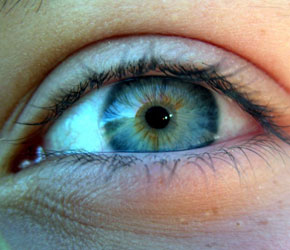
Color blindness in humans is caused by the genetic deficiency or loss of either the green or the red photopigment hence that input into the brain. So, the brain learns to see only those colors that can be interpreted or constructed by combining the input from the other two remaining visual pigments. The result is a less robust spectrum of colors, but colors are still seen. True color blindness in humans does exist when two of the three visual pigments are genetically unavailable, but it is exceedingly rare. If only one visual pigment channel is coming to the brain, say the blue cone input, it isn’t seen as blue but rather as on or off—hence that is “real” color blindness and would be a black and white world.
So, almost all color blindness in humans is not true color blindness but would be better described as color deficiency.
Now, let’s go back to your dog. Normal dogs have two different visual pigments in their cones, and much like humans afflicted with so-called “color blindness.” But they would see color. The color input would be weaker to some extent because dogs have fewer cones than we do because they are evolutionarily closer to their nocturnal ancestors. Cones are needed less, if at all, at night.
So, what about the other pets in the household? Your cat will have a similar color distribution as your dog although there are some subtle differences.
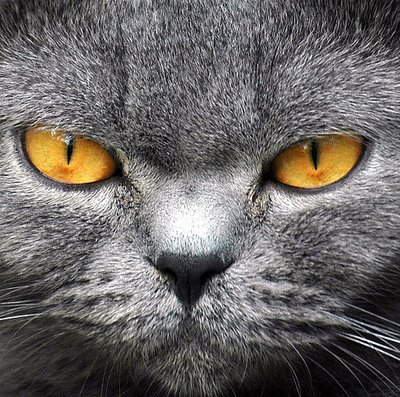
Birds, on the other hand, possess rich color vision, in many cases better than our own. Most birds have four cone visual pigments, although this varies. In general, birds have an additional ultraviolet pigment in their cones and many more cones than we have. Furthermore the visual pigments that would be similar to ours span different wavelengths. Their visual experience is richer than our own in ways impossible to describe or understand. Not o

By: Lauren,
on 4/15/2011
Blog:
OUPblog
(
Login to Add to MyJacketFlap)
JacketFlap tags:
*Featured,
ervin staub,
overcoming evil,
staub,
ervin,
constructive,
Law & Politics,
differentness,
community,
hope,
US,
inequality,
Psychology,
vision,
America,
Obama,
genocide,
morality,
Add a tag
By Ervin Staub
In difficult times like today, people need a vision or ideology that gives them hope for the future. Unfortunately, groups often adopt destructive visions, which identify other groups as enemies who supposedly stand in the way of creating a better future. A constructive, shared vision, which joins groups, reduces the chance of hostility and violence in a society.
A serious failure of the Obama administration has been not to offer, and help people embrace, such a vision. Policies by themselves, such as health care and limited regulation of the financial system, even if beneficial, don’t necessarily do this. A constructive vision or ideology must combine an inspiring vision of social arrangements, of the relations between individuals and groups and the nature of society, and actions that aim to fulfill the vision. A community that includes all groups, recreating a moral America, and rebuilding connections to the rest of the world could be elements of such a vision.
In difficult times, people need security, connection to each other, a feeling of effectiveness, and an understanding of the world and their place in it. Being part of a community can help fulfill these needs. The work programs of the Roosevelt administration during the Great Depression provided people with livelihood. But they also gave them dignity and told them that they were part of the national community.
Community means accepting and embracing differences among us. Especially important among the influences that lead groups of people to turn against each other is drawing a line between us and them, and seeing the other in a negative light. The words and actions of Nelson Mandela and Abraham Lincoln propagated acceptance of the other even after extreme violence. The U.S. is a hugely varied country, and for every one of us, there can be many of “them.” But others’ differentness can enrich us. People travel to distant places just to glimpse at other people and their lives. As much research shows, real contact, deep engagement, working for shared goals across races, religions, classes, and political beliefs helps to overcome prejudice, helps us to see our shared humanity. Engaging with each other’s differentness here at home can connect us to each other–and increase our satisfaction in life.
Creating a vision—and reality—of community also requires addressing the huge financial inequality in America. Research shows that during periods of greater inequality in income, people are less satisfied. This is true of liberals; perhaps surprisingly, to a lesser degree, it is also true of conservatives. Inequality presumably reduces people’s feeling of community. The financial crisis provided an opportunity to begin to address inequality, to use laws, policies, and public opinion to limit compensation in financial institutions and corporations. Roosevelt had to fight for his programs. This time there has not been enough “political will,” that is, commitment and courage, to do this
Good connection to the rest of the world also increases our experience of community—and our security. For many decades, the United States was greatly respected and admired. Now, as I travel around the world in the course of my work on preventing violence between groups and promoting reconciliation, most of the people I talk to are highly critical of us. But my sense is that many yearn to again trust and respect us.
In his Cairo speech, as President Obama reached out to the Muslim world, he offered an image of connection between countries and peoples. But words alone are not enough, and there has been little follow up. He also continued with policies of the Bush administration, such as extraordinary rendition, handing over suspected terrorists to other countries for interrogation using torture. We Americans believe we are a moral people; both for

By: Lauren,
on 1/10/2011
Blog:
OUPblog
(
Login to Add to MyJacketFlap)
JacketFlap tags:
ervin staub,
overcoming evil,
staub,
ervin,
constructive,
hope,
Current Events,
Racism,
Psychology,
vision,
genocide,
ideology,
segregation,
university of massachusetts,
overcoming,
*Featured,
Add a tag
By Ervin Staub
In difficult times people need a vision of a better future to give them hope. The U.S. is experiencing difficult times. The majority of people are poorer and many are out of work, the political system is frozen and corrupted by lobbyists and institutions that have gone awry, and there are constant changes in the world that create uncertainty. We are also at war, and face the danger of attack. While pluralism – the openness and public space to express varied ideas, and for all groups in society to have access to the public domain – is important for a free society, the cacophony of shrill voices creates confusion and makes it difficult for constructive visions and policies to emerge.
In times like these, subgroups of a society – racial, ethnic, religious or political – often turn against other groups. Members of one group, often the largest or dominant group, blame others for the difficulties of life. Often, their ideology is destructive. Instead of addressing the source of societal problems, such visions frequently focus on enhanced national power, racial superiority, or a utopian degree of social equality in the society or in the world. They identify enemies that supposedly stand in the way of the fulfillment of the vision. The group turns against and engages in increasingly harmful, and eventually violent, actions against this enemy.
In response to intensely difficult conditions, destructive ideologies and movements have shaped life in many nations. In Germany the ideology stressed racial superiority, expansion, and submission to a leader. Jews and gypsies were regarded as racially inferior, Slavs both inferior and in the way of expansion. In Cambodia the vision was of total social equality, with everyone judged incapable of contributing to or living in such a society, whether the former elite, educated people or minorities as enemies. In the former Yugoslavia, for the Serbs, it was renewed nationalism, with other groups, especially Muslims in Bosnia and Kosovo as enemies. In Argentina, people stood against communism and in defense of faith and order. Everyone considered left-leaning – even people working to improve the lives of poor people – became enemies. In Rwanda “Hutu power” over the Tutsi minority, became the guiding ideology. While significant societal change is usually shaped by a number of influences, such ideologies had important roles in creating hostility and violence, ending in mass killing or genocide.
In the U.S. so far, in spite of our increasingly dysfunctional political life and shrill political rhetoric, there is no comparable destructive ideology. While we have many divisions, and ignore the harm to civilians outside the country in the wars we fight, the rights of different groups inside the country have increasingly come to be respected, especially in the last half century. However, many have turned against the current administration, and to some extent, against government in general. They affirm core American values of freedom and individuality, but in the service of tearing down, without a vision of what to create. This is one half of an ideology, the against part, without a clear aim, a for part.
Such rebellion seems to be supported, and perhaps instigated, by people in the background who finance it, and by politicized media. It thrives on people’s genuine and understandable distress, the result of the frustration of material needs, but even more, the frustration of a variety of psychological needs, uncertainty, and fear. Joining ideological groups and movements helps fulfill needs for security, community, and a feeling of effectiveness at a time when people feel powerless.
We need a constructive vision, words joined

The Pirate of Kindergarten by George Ella Lyon, illustrated by Lynne Avril
Ginny could see two of everything. She loved Reading Circle at school, but it was hard to get there because she saw double the number of chairs, so she always ran into some of them. To read her own book, Ginny had to put her nose down close to the pages and even then she saw two of each of the words. She could tighten her brain to remember to read each word only once, but even then she quietly said them a second time to herself. Squinting at the pages helped, but her teacher asked her not to. She had trouble cutting with scissors and ended up with a rabbit with three ears. Everything changed the day that vision screening happened at school. When it was Ginny’s turn to read from the chart, she read each letter twice. The nurse there told her that she had to go to a doctor to see what could be done for her double vision. And that’s how with an eye patch, Ginny became a pirate at Kindergarten.
Lyon’s writing has a natural ease about it combined with a skillful pacing. Readers are shown the way that Ginny sees the world through tangible examples that young children will understand and relate to easily. The amount of text per page is just right for sharing with preschoolers and Kindergarteners. Avril’s illustrations are bright and vibrant. The pages filled with double vision allow readers to see through Ginny’s eyes. The confusion of the jumble of chairs, the struggle with lines and scissors, and the doubling of words when she reads. These are all demonstrated directly on the page.
A cheery view of a child who sees the world differently than most, this book is appropriate for ages 4-6.
Reviewed from copy received from Simon & Schuster.

By: Rebecca,
on 3/22/2010
Blog:
OUPblog
(
Login to Add to MyJacketFlap)
JacketFlap tags:
Science,
A-Featured,
Medical Mondays,
Psychology,
vision,
avitaminotic nyctalopia,
Blindspots,
Bruno G. Breitmeyer,
dietary blindness,
vitamin A,
Health,
Add a tag

Bruno G. Breitmeyer, is a Professor of Psychology at the University of Houston. In his new book, Blindspots: The Many Ways We Cannot See, we move from cataracts and color blindness through blindsight, acquired dyslexia, and visual agnosias. Breitmeyer uses what we’ve learned about the limits of our sight to illustrate the limits of our ability to mentally visualize and our ability to reason, covering everything from logical fallacies to how our motives  and emotions relentlessly color the way we see the world. In the excerpt below we learn about one kind of blindness, caused by Vitamin A deficiency.
and emotions relentlessly color the way we see the world. In the excerpt below we learn about one kind of blindness, caused by Vitamin A deficiency.
Even if we are blessed with caring parents and a stimulating environment during infancy and childhood, uncontrollable environmental factors can cause or promote visual deficits in an otherwise healthy visual system. Imagine the following. It is March of 1797. You are a settler living in the subarctic wilds near Hudson Bay in present day Quebec, Canada. Your crop of winter squash was nipped in the bud by the early onset of the harshest winter you have yet experienced. It lingers into spring, by which time you have depleted your larder’s store of dried halibut and Arctic cod. For some time your dietary mainstay has been nothing but the wild rice and the dwindling rations of dry beans you purchased late last fall. Although high in carbohydrates, protein, and several of the B vitamins, these foods do not support your dietary needs for Vitamin A. You have noticed some minor visual problems during your daytime activities; however, at night, your vision has deteriorated dramatically to the point where you do not dare to leave the immediate vicinity of your dwelling. You are wondering whether or not you are suffering from some kind malady that will leave your vision permanently impaired. By July, after you have feasted on plenty of fish harvested from the bay and on ripe berries gathered in the wild, you are relieved to find your vision has returned to normal. Although you could not have known it, you were suffering from avitaminotic nyctalopia, a type of night blindness, during the prior winter. It was caused by a prolonged (but fortunately temporary) vitamin A deficiency in your diet.
Vitamin A is known to play an important role in the regeneration of the rod photopigment, rhodopsin. Rhodopsin molecules are “bleached” when they react with photons of light, rendering them inert to further stimulation by light. If, due to a chronic dietary Vitamin A deficiency, bleached rhodopsin molecules are not restored to their prior unbleached photoreactive state, nocturnal vision eventually deteriorates to dysfuctional levels. Epidemics of such night blindness have been known to occur in regions where the availability of plants or animal food sources containin
I’ve been thinking lately about the importance of writers having a vision for the work they will do. This is one of those ideas that has become more and more important to me as I work with more and more students. The ones who write well are the ones who are able to envision their [...]
I'm taking time over a few posts to discuss novel writing. This week I'm going to talk about confidence in your unique vision. Alexander Pope, an English poet, wrote a famous verse: Essay on Critique. He understood the artifice of criticism. I really think that authors will just hand over too much power to others. We all want approval and blessing. For that approval and blessing, we will throw away our vision for an offhand comment by a supposed expert.
I think to write a really good novel you have to be willing to be a fool. Like Pope shared in his poem, you have to rush into a place where angels dare not tread. You have to be sooo hopeful -- bursting with hope. There is an agony to creating books, and you will have to embrace that agony if you wish to write a book that will stir the hearts of readers. It’s really painful to write a novel. And after you managed to spin out the first draft, it’s painful to hear critique of that novel.
What are you to do? Always remember the first audience of your work is you.
Write the story you want to read, and when searching for critiques, find people who share your passion for your work. I really wouldn’t take advice from someone who didn’t care deeply about my work. I want to passion on every level of my work, and people that are weighing in on my work need to be invested. So many writers want an editor of a major publishing house to look at their work. They fork over piles of cash at conferences to have a disinterested soul cast tired eyes on their words.Is this really all that helpful?
But we want to sell work! Well, if no one but your critique group shows any passion for your work, be happy you have a critique group and keep working. I firmly believe you gift will make a place for you. I think that it is useful to give yourself freedom to not listen to the popular opinions of the hour. We tend to chain ourselves with ideas of what the market wants, or the blinding hope that a publisher will be interested in this work if we will rip out half the plot and recast all the main characters.
In the end you, you must write your heart out. Write the story that burns within you. Don’t let all outside voices stop you. If you fail, let it be when you are “daring greatly.”
Think about this quote and then fearless follow your vision:
It is not the critic who counts; not the man who points out how the strong man stumbles, or where the doer of deeds could have done them better. The credit belongs to the man who is actually in the arena, whose face is marred by dust and sweat and blood, who strives valiantly; who errs and comes short again and again; because there is not effort without error and shortcomings; but who does actually strive to do the deed; who knows the great enthusiasm, the great devotion, who spends himself in a worthy cause, who at the best knows in the end the triumph of high achievement and who at the worst, if he fails, at least he fails while daring greatly. So that his place shall never be with those cold and timid souls who know neither victory nor defeat.
Theodore Roosevelt
F
IN
D TWE
NTY TW
O FROGS I
N THIS BOOK
The endpapers in Paul Needs Specs are arranged like an eye chart since the book is about a young boy's vision problems. Based on author Bernard Cohen's personal experience of needing glasses as a child, this tale is narrated by Paul's sister as she explains Paul's dilemma and how it is they were able to remedy the situation.
Along the way, illustrator Geoff Kelly hides twenty-two frogs in the psychedelic, eye-bending (literally) illustrations. The cover of the book shows Paul not very happy, but as his sister explains, Paul's new glasses (specs) create a whole new world for Paul to explore.

By:
Laura Zarrin,
on 2/15/2008
Blog:
Creative Whimsies
(
Login to Add to MyJacketFlap)
JacketFlap tags:
vision,
Oprah,
Louise Hay,
alligator,
story,
book,
alligator,
Oprah,
Louise Hay,
vision,
Add a tag
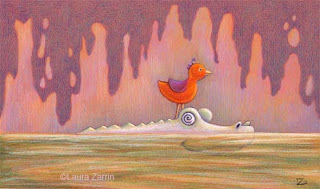
I've had this story percolating for a long time. It just hasn't jelled yet. To jump start it, I decided to color one of my sketches. Let's hope this is the start of something good.
I've had a lot of interesting things happen lately. I saw Louise Hay on Oprah, which reminded me to think positively, develop a vision, and to let it go. I don't really believe that "put it out to the universe" thing. I believe, rather, that when you have a vision and think positively, you are more aware of the opportunities that come your way. That being said, "The Universe" is messing with me. One of the many things that have happened in the last week is that I had a passing thought that a gym membership would be a good thing to have in order to build my strength for skiing. It's not in the budget right now, but the day after that thought, a free 30 day trial coupon arrived from my old gym. Spooky. If the universe is listening, I'd like to win the lottery;-)

By:
Kate Messner,
on 6/18/2007
Blog:
Kate's Book Blog
(
Login to Add to MyJacketFlap)
JacketFlap tags:
books,
essays,
lisa yee,
david lubar,
laurie halse anderson,
jerry spinelli,
cynthia kadohata,
joseph bruchac,
mal peet,
markus zusak,
mt anderson,
cynthia lord,
jack gantos,
richard preston,
margaret peterson haddix,
wendelin van draanen,
walter dean myers,
jennifer roy,
christopher paolini,
final exams,
gene luen yang,
janet tashjian,
jk rowling,
will hobbs,
sharon creech,
pete hautman,
Add a tag
If you write for young people, consider this LJ post a big, fat thank you note (virtual chocolates and ice cream, too). I just finished reading my 7th graders' final exams. I ask them to write an essay reflecting on how they've grown as readers, writers, and human beings this year. Here's a quote from K...
"In the beginning of the year, I didn't like to read at all. But then my teacher showed me all these books that were for me, and I couldn't stop reading."
Books that were for her. Written just for her. Or at least it felt that way. She went on to talk about Sonya Sones, Sarah Dessen, Deb Caletti, and Nancy Werlin -- voices that spoke to her over the past ten months.
And K wasn't the only one who named names as she reflected on books that made a difference this year. My kids talked about finding themselves in the characters of Pete Hautman, Janet Tashjian, Jack Gantos, Laurie Halse Anderson, Lisa Yee, Sharon Creech, Jerry Spinelli, Wendelin Van Draanen, David Lubar, Cynthia Kadohata, Mal Peet, and Walter Dean Myers. They wrote about being challenged by M.T. Anderson, Richard Preston, and Markus Zusak. They wrote fondly about escaping into the worlds of Margaret Peterson Haddix, Christopher Paolini, and JK Rowling. And they reflected on walking a mile in someone else's shoes as they read Gene Luen Yang, Cynthia Lord, Will Hobbs, Jennifer Roy, and Joseph Bruchac.
I write for kids. I know that some days, it feels like you're alone with your computer, and even your computer doesn't like you very much. So I thought I'd share K's reflection on her year of reading. We all need to realize when we write, we're writing for someone important. Someone like K, who's waiting for a book that's just for her, just for him.
If you write for kids, that's the work you're doing every day. You may never get to read the end-of-the-year essays, but you should know that you make a difference, and you're appreciated.


















 and emotions relentlessly color the way we see the world. In the excerpt below we learn about one kind of blindness, caused by Vitamin A deficiency.
and emotions relentlessly color the way we see the world. In the excerpt below we learn about one kind of blindness, caused by Vitamin A deficiency.

Interesting… is that V also meant to suggest a heart as well?
(Insert: “Star Wars is a cheap Wizard of Oz copy” meme here.)